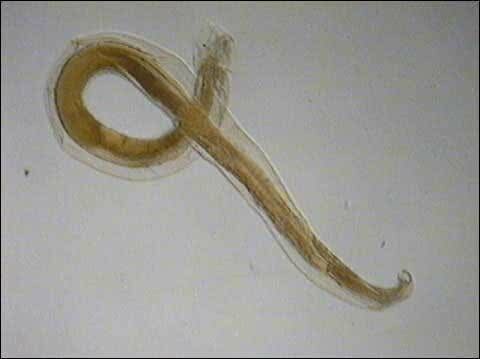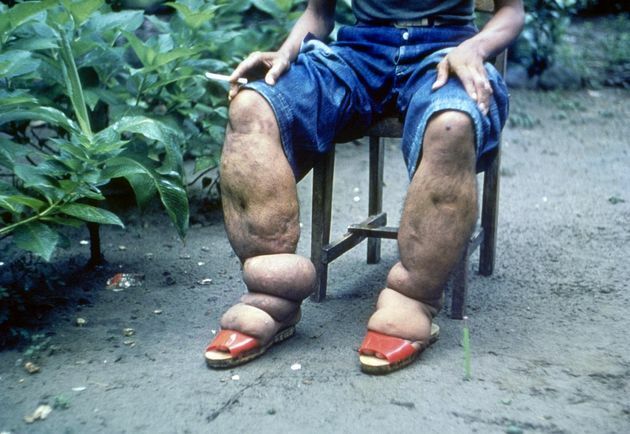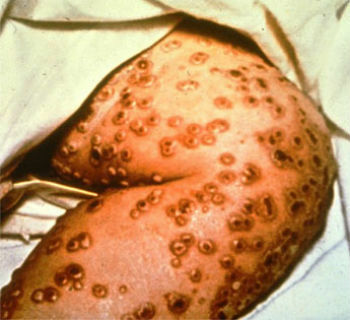Hookworm, hookworm or yellowing refer to human worms caused by two species of roundworms, the Ancylostoma duodenale it's the Necator Americanus.
These worms are small and measure approximately 1 cm to 1.5 cm in length.
The worms that cause hookworm are present all over the world. In Brazil, they predominate in rural areas without basic sanitation and where there is a habit of going barefoot.
 Necator Americanus
Necator Americanus
Symptoms
This disease is characterized by an intestinal infection.
When the worms find themselves in the small intestine of their hosts, they cling with their teeth to the intestinal walls, causing injuries and bleeding.
Due to blood loss, infected people have a yellowish skin (hence the disease is also called yellowing) and anemia.
Other symptoms that may arise are: skin irritation, where the worm enters the body, weakness, discouragement, weight loss and lung damage.
Life cycle
The adult forms of the worms live in the small intestine of the infected person, where males and females mate and give rise to eggs that are eliminated with feces.
If the feces come into contact with the soil and find suitable conditions, such as high humidity and temperature, the eggs hatch and release small larvae. These can live up to 7 days in the environment, when they mature and are able to infect a host.
The larvae pass through the skin and enter the bloodstream, until reaching the lungs, where they perforate the alveoli and travel up the trachea. From there, they pass through the pharynx, are swallowed and reach the intestines.
In the small intestine, they establish themselves definitively and reach sexual maturity.
Streaming
Worm larvae released through human feces can come into contact with the soil.
Thus, transmission can occur through direct contact of the larvae with human skin, especially in the region of the feet, legs, buttocks and hands.
A common example of contamination is walking barefoot on contaminated soil.
Farm workers and children playing on the land can be easily contaminated.
Forms of Prevention and Treatment
- Measures of sanitation adequate;
- Use of shoes in contact with the earth;
- Pay attention to the children's play area;
- Properly treat patients to avoid further contamination.
For the treatment of this worm medications can be used.


